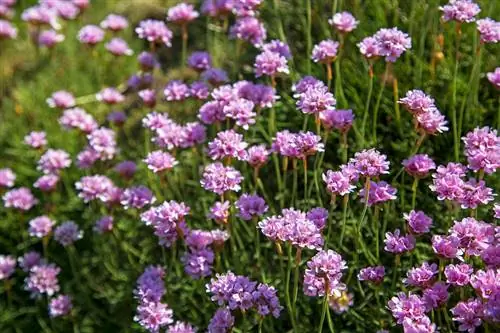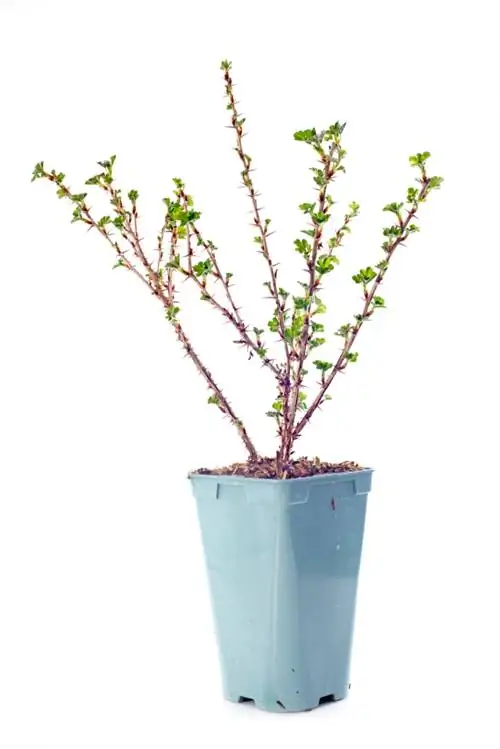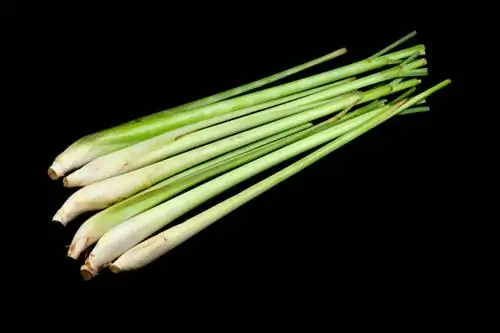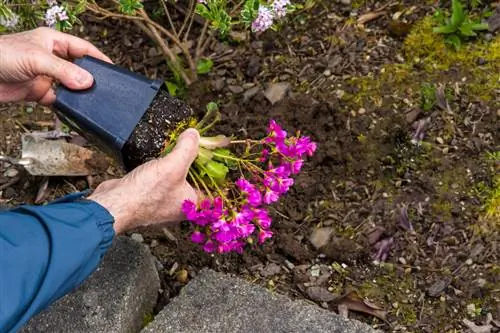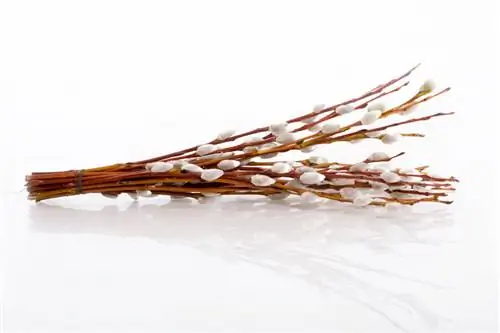- Author admin [email protected].
- Public 2023-12-16 16:46.
- Last modified 2025-01-23 11:20.
The cushion-like grass carnations (Armeria maritima), which are wonderful for heather or rock gardens, can be easily propagated by division, cuttings or by sowing. The young plants will very quickly form lush, spherical cushions.
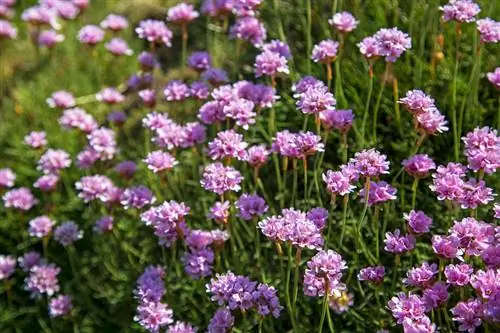
How to propagate thrush?
Cloves can be propagated by division, cuttings or sowing. Divide the plant every three to four years to encourage growth and flowering. Cuttings are most successful in June and July, while sowing can be done directly in August or September or in pre-culture from February to April.
Share carnations
Carnations age very quickly within a few years and then turn an unsightly brown color from below - not to mention that the flowering also fades away. For this reason, the grass carnation cushion should be rejuvenated by division every three to four years. Grass cloves can be divided very easily; even the smallest pieces grow back reliably and quickly form new, dense cushions. You can do division throughout the summer until the beginning of September at the latest.
- Use a spade or digging fork to loosen the soil around the cushion well.
- Now carefully lift the grass cloves and their roots out of the ground.
- Examine the roots carefully for damaged or diseased areas
- and remove them.
- Carefully pull apart the plants and roots with your hands.
- Replant the individual plants.
- Since carnations are hardy, the young plants can go outdoors straight away.
Propagate cloves through cuttings
The propagation of grass cloves by cuttings also brings good results, the best time for which is in the months of June and July.
- Choose young shoots that are about six to eight centimeters long.
- Cut this right at the base.
- Flowering or budding shoots are not suitable as they do not have enough strength to root.
- Plant the cuttings in pots filled with sand.
- A mixture of peat and sand is also well suited.
- Wet the substrate slightly.
- Keep humidity high until rooting,
- for example by placing the pots in an indoor greenhouse (€29.00 on Amazon)
- or cover with a translucent film.
The cuttings will develop their first roots after about six weeks and can then be transplanted.
Sowing cloves
If the plants are not pruned after flowering, they usually self-sow very reliably. You can also sow the seeds (collected or purchased) yourself, either directly in August or September or in pre-cultivation between February and April. Grass cloves are cold germinators and therefore need a cold period to break through the germination inhibition.
Tip
Carnations grown from seeds only flower hesitantly in the first year, but will make up for this in the second year.

